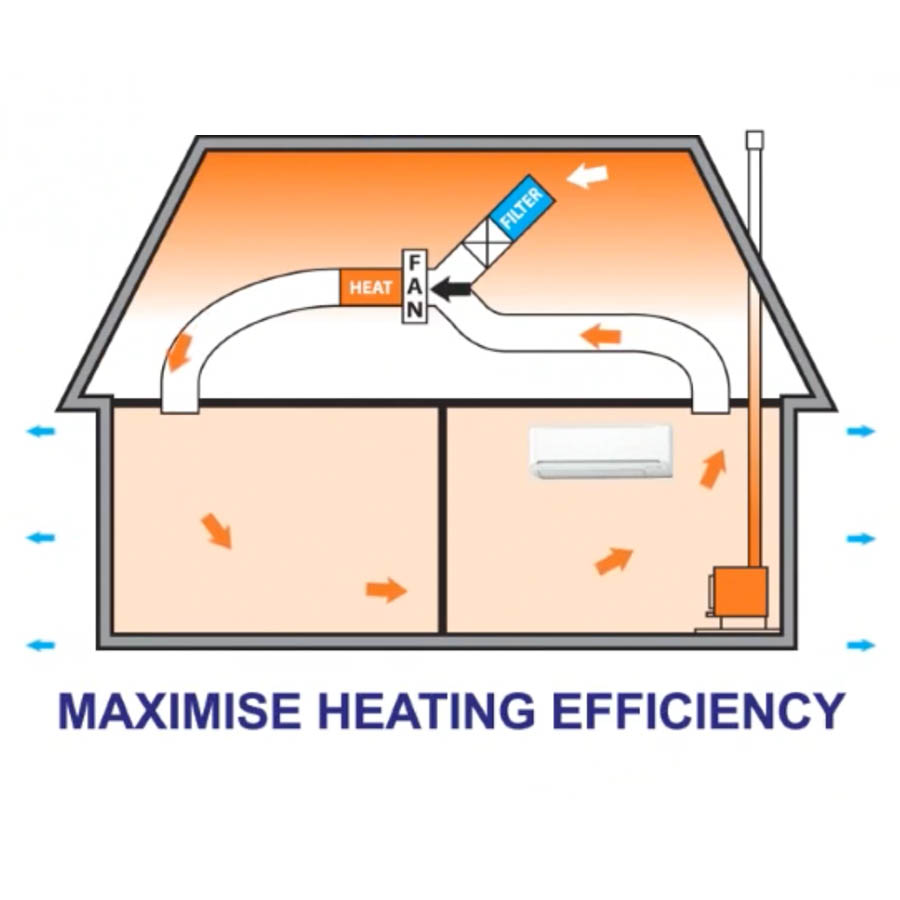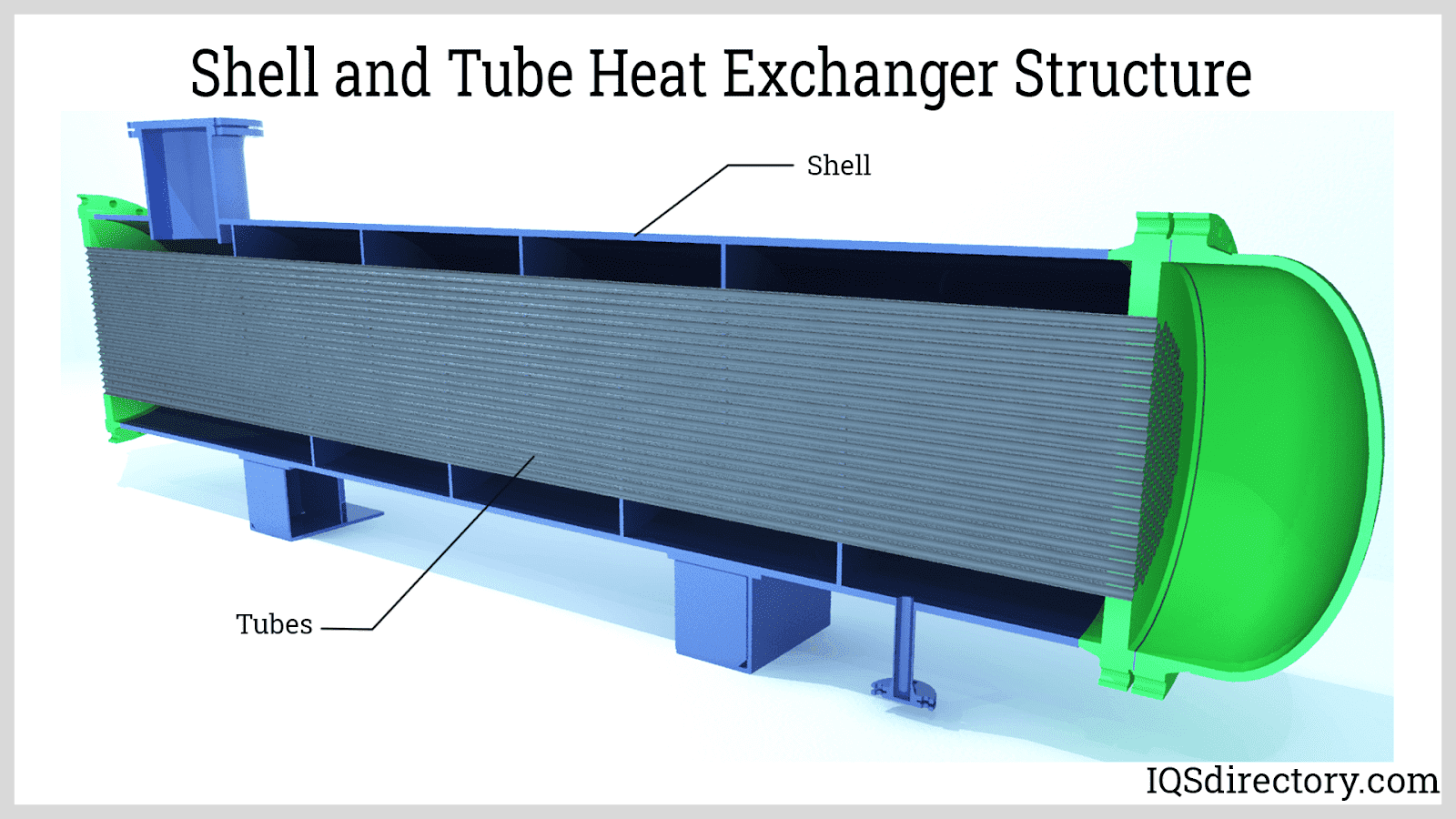Advancements in Heat Transfer Systems: What You Required to Know for Optimal Performance
Technologies in Heat transfer systems are changing efficiency throughout different sectors. Advanced materials like graphene and nanofluids guarantee considerable enhancements in thermal conductivity. The combination of IoT and maker understanding offers chances for real-time monitoring and improved energy performance. Nevertheless, the landscape of thermal administration is rapidly progressing (DVS Heat Transfer Systems). Understanding these growths is essential for achieving ideal system performance and sustainability in the future. What specific improvements are forming this makeover?
Emerging Products for Improved Heat Transfer

Advanced Heat Exchanger Layouts
While traditional Heat exchangers have served their purpose in numerous applications, progressed styles are now emerging to meet the increasing needs for performance and efficiency. These ingenious styles, such as plate, shell-and-tube, and finned-tube Heat exchangers, incorporate improved surface areas and boosted circulation patterns to increase thermal transfer prices. In addition, portable designs enable minimized area demands without compromising performance. Advanced materials, such as compounds and corrosion-resistant alloys, in addition improve longevity and performance under extreme problems. Simulation technologies and computational liquid characteristics are progressively employed to fine-tune these designs, making certain peak Heat transfer attributes. As industries look for to reduce energy consumption and optimize output, the fostering of innovative Heat exchanger layouts is critical in achieving these purposes.
The Duty of Nanotechnology in Heat Transfer
Nanotechnology plays a vital duty in boosting thermal conductivity within Heat transfer systems. By manipulating materials at the nanoscale, researchers have actually achieved substantial renovations in power performance. These innovations not only enhance efficiency however likewise contribute to even more lasting power options.
Improved Thermal Conductivity
Substantial innovations in thermal conductivity have arised via the application of nanotechnology, changing Heat transfer systems throughout numerous sectors. By including nanoparticles right into Heat transfer liquids and products, scientists have actually accomplished remarkable boosts in thermal conductivity. These nanoparticles, such as carbon nanotubes, graphene, and steel oxides, boost the Heat transfer properties as a result of their high area and distinct thermal characteristics. The resulting composites display enhanced performance in applications varying from electronic devices cooling systems to renewable resource modern technologies. Additionally, the capability to tailor the size, shape, and make-up of nanoparticles enables for maximized thermal management services. As a result, nanotechnology continues to play a critical function in the advancement of much more effective and efficient Heat transfer systems, leading the way for improved commercial applications.
Energy Efficiency Improvements

Combination of IoT in Heat Transfer Equipments
The integration of IoT in Heat transfer systems presents the application of wise sensors that improve functional performance. These sensing units allow real-time data tracking, enabling immediate modifications and optimizations. This technical improvement has the possible to considerably boost efficiency and power administration in Heat transfer applications.
Smart Sensors Application
As Heat transfer systems develop, the combination of smart sensing units via the Net of Things (IoT) has become a transformative approach. These sensing units enable real-time monitoring of temperature level, flow, and stress rates, boosting system efficiency and reliability. By collecting and transferring data, they help with positive upkeep, lowering the threat of system failures. Furthermore, clever sensing units add to power cost savings by refining operational specifications based on environmental conditions. Their capacity to evaluate anomalies and trends permits notified decision-making, making sure peak efficiency of Heat transfer systems. As sectors significantly embrace this innovation, the implementation of smart sensors stands to reinvent how Heat transfer systems are taken care of, leading the way for greater sustainability and enhanced performance outcomes.
Real-Time Information Tracking
Just how can real-time data keeping an eye on boost the effectiveness of Heat transfer systems? By incorporating Internet of Points (IoT) technology, Heat transfer systems can utilize continual data collection from clever sensors. This real-time surveillance enables for instant evaluation of temperature, pressure, and flow prices, allowing drivers to recognize ineffectiveness without delay. Consequently, changes can be made to optimize performance, reduce power usage, and prolong devices lifespan. In addition, anticipating upkeep can be applied, minimizing unanticipated downtime and costly fixings. The capacity to visualize efficiency metrics via dashboards improves decision-making, fostering a positive method to system administration. Eventually, real-time information keeping track of not just enhances functional performance but also adds to sustainability objectives within commercial procedures.
Energy Efficiency and Sustainability Trends
Energy performance and sustainability trends are improving the landscape of Heat transfer systems, driving advancement and conformity throughout numerous industries. Organizations are progressively prioritizing energy-efficient styles to lower operational costs and reduce environmental effects. The assimilation of renewable resource sources is becoming extra prevalent, making it possible for Heat transfer systems to run sustainably while meeting regulative needs. Furthermore, developments in materials and modern technologies advertise lower energy intake and boost general efficiency. Lifecycle assessments are also getting grip, permitting business to assess the ecological impact of Heat transfer systems from production to disposal. This concentrate on sustainability not only supports company responsibility but additionally placements organizations competitively in a market where customers progressively favor environment-friendly options. Energy effectiveness and sustainability stay essential factors to consider for future growths in Heat transfer innovation.
Developments in Thermal Monitoring Solutions
While the demand for reliable Heat transfer proceeds to climb, technologies in thermal monitoring options are emerging to address both efficiency and sustainability challenges. Advanced products, such as phase change products and nanofluids, are being established to enhance Heat transfer effectiveness - DVS Heat Transfer Systems. These products boost thermal conductivity and helpful resources permit for better temperature regulation in various applications. In addition, technologies like energetic thermal control systems are obtaining grip, enabling real-time modifications to have a peek here handle Heat flow effectively. These systems add to power savings and lower the environmental effect of thermal processes. Furthermore, the integration of IoT in thermal administration helps with surveillance and predictive maintenance, making certain enhanced efficiency and durability of Heat transfer systems. In general, these technologies stand for considerable strides toward even more sustainable thermal management methods
Future Directions in Heat Transfer Innovation
Emerging innovations in thermal administration options signal a promising future for Heat transfer technology. Researchers are increasingly concentrating on creating products with premium thermal conductivity and improved power effectiveness. Innovations such as nanofluids, which consist of put on hold nanoparticles, supply substantial renovations in Heat transfer performance. In addition, the assimilation of smart products that adjust to varying temperature problems is obtaining grip, allowing for even more efficient and receptive systems. The surge of additive production techniques is additionally enabling the layout of complicated Heat exchanger geometries that optimize liquid circulation. Additionally, the execution of artificial intelligence algorithms is anticipated to reinvent the optimization of Heat transfer systems, promoting predictive upkeep and efficiency enhancement. Jointly, these advancements are positioned to transform the landscape of Heat transfer innovations in numerous industries.

Frequently Asked Inquiries

Just how Do I Select the Right Heat Transfer System for My Application?
Choosing the best Heat transfer system involves evaluating application needs, consisting of temperature level varieties, fluid residential properties, and efficiency needs. Analyzing system kinds, upkeep factors to consider, and cost-effectiveness additionally plays a important source necessary duty in making an informed decision.
What Are the Maintenance Demands for Advanced Heat Exchangers?
Upkeep needs for sophisticated Heat exchangers normally include normal inspections, checking for leakages, cleansing of surfaces, and ensuring ideal circulation rates. Complying with supplier standards warranties reliable procedure and extends the equipment's life expectancy.
How Do Ecological Variables Impact Heat Transfer Efficiency?
Ecological elements considerably influence Heat transfer efficiency. Variations in moisture, airflow, and temperature effect thermal conductivity and convective Heat transfer, inevitably affecting system efficiency and requiring factor to consider throughout the layout and operation of Heat transfer systems.
What Security Requirements Relate To Heat Transfer Solutions?
Safety requirements for Heat transfer systems generally consist of standards from organizations such as ASME and ASTM. DVS Heat Transfer Systems. These criteria address materials, layout, and functional methods to ensure reliability, efficiency, and security against risks in various applications
Exactly How Can I Fix Usual Heat Transfer System Issues?
Repairing typical Heat transfer system problems includes inspecting for leaks, making sure appropriate fluid circulation, examining insulation stability, and validating temperature differentials. Identifying these elements can aid preserve system effectiveness and prevent additional difficulties.
Nanotechnology plays a necessary function in enhancing thermal conductivity within Heat transfer systems. Substantial developments in thermal conductivity have emerged with the application of nanotechnology, transforming Heat transfer systems across various markets. Improvements in thermal conductivity through nanotechnology have actually led the means for exceptional renovations in power effectiveness within Heat transfer systems. Energy efficiency and sustainability patterns are reshaping the landscape of Heat transfer systems, driving advancement and conformity across various sectors. The assimilation of IoT in thermal monitoring assists in monitoring and predictive maintenance, making sure enhanced efficiency and longevity of Heat transfer systems.